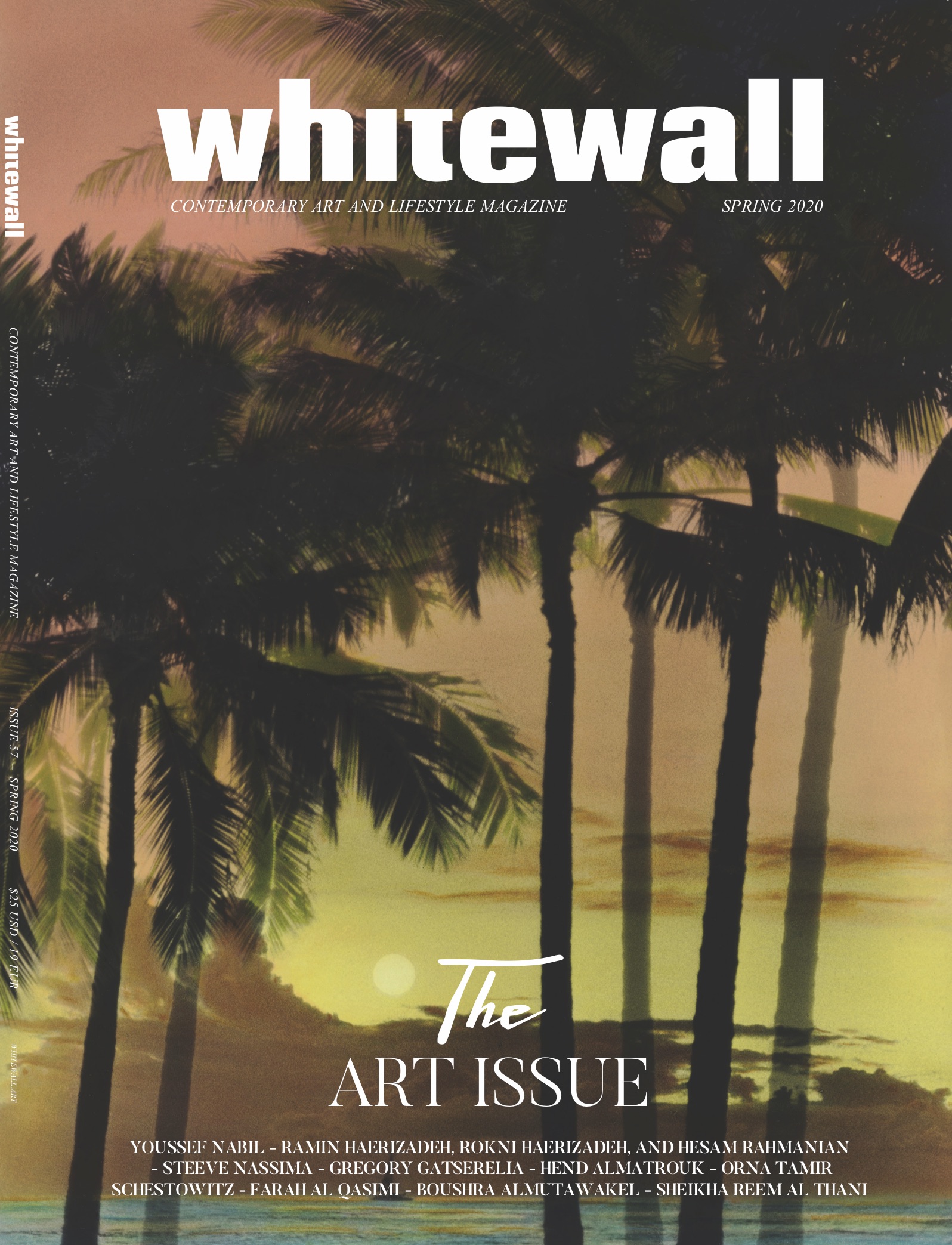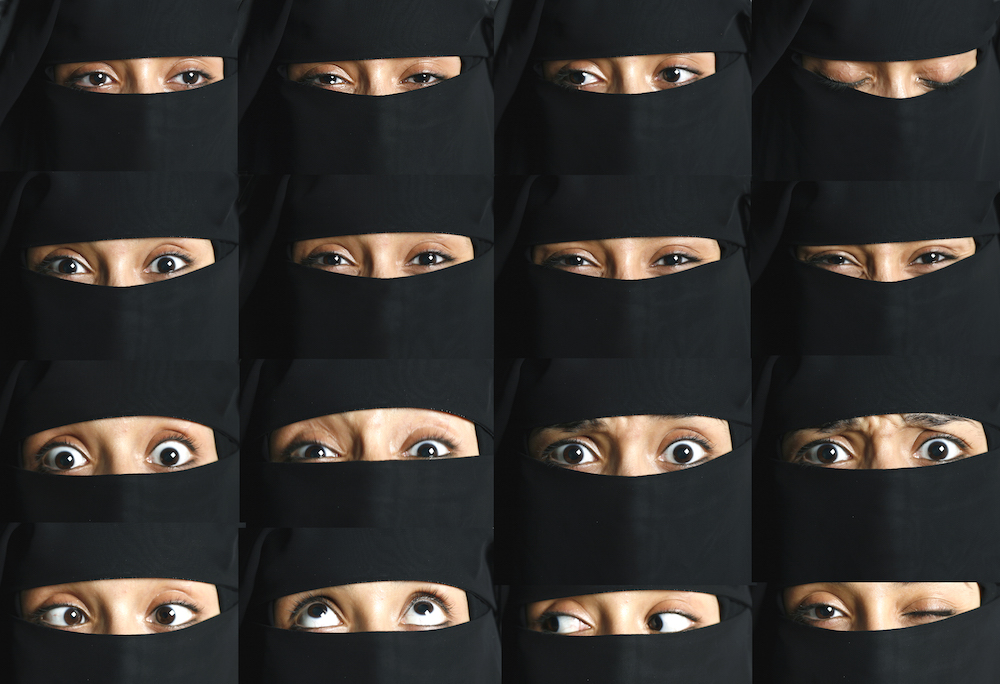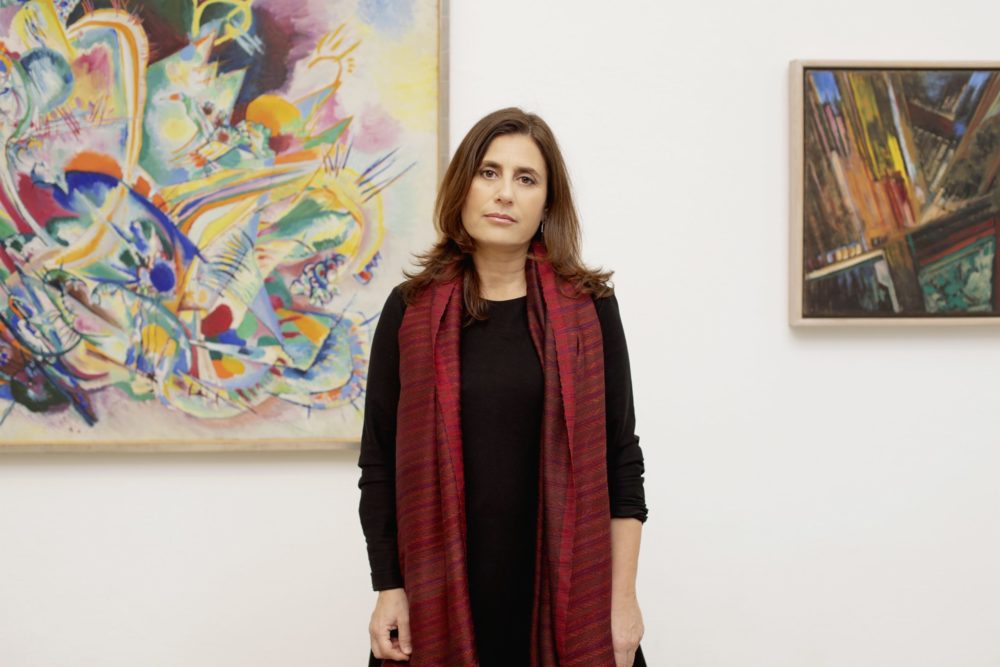We are thrilled to announce the digital launch of Whitewall‘s Spring 2020 Art Issue, featuring Youssef Nabil on the cover.
Youssef Nabil grew up engrossed in the golden age of Hollywood and Egyptian film. In the eighties on the streets of Cairo, he was bombarded by old, hand-painted movie posters. Those images were a dying art he decided to learn in the early nineties, loving the mysterious realm in which they existed between photograph and painting.
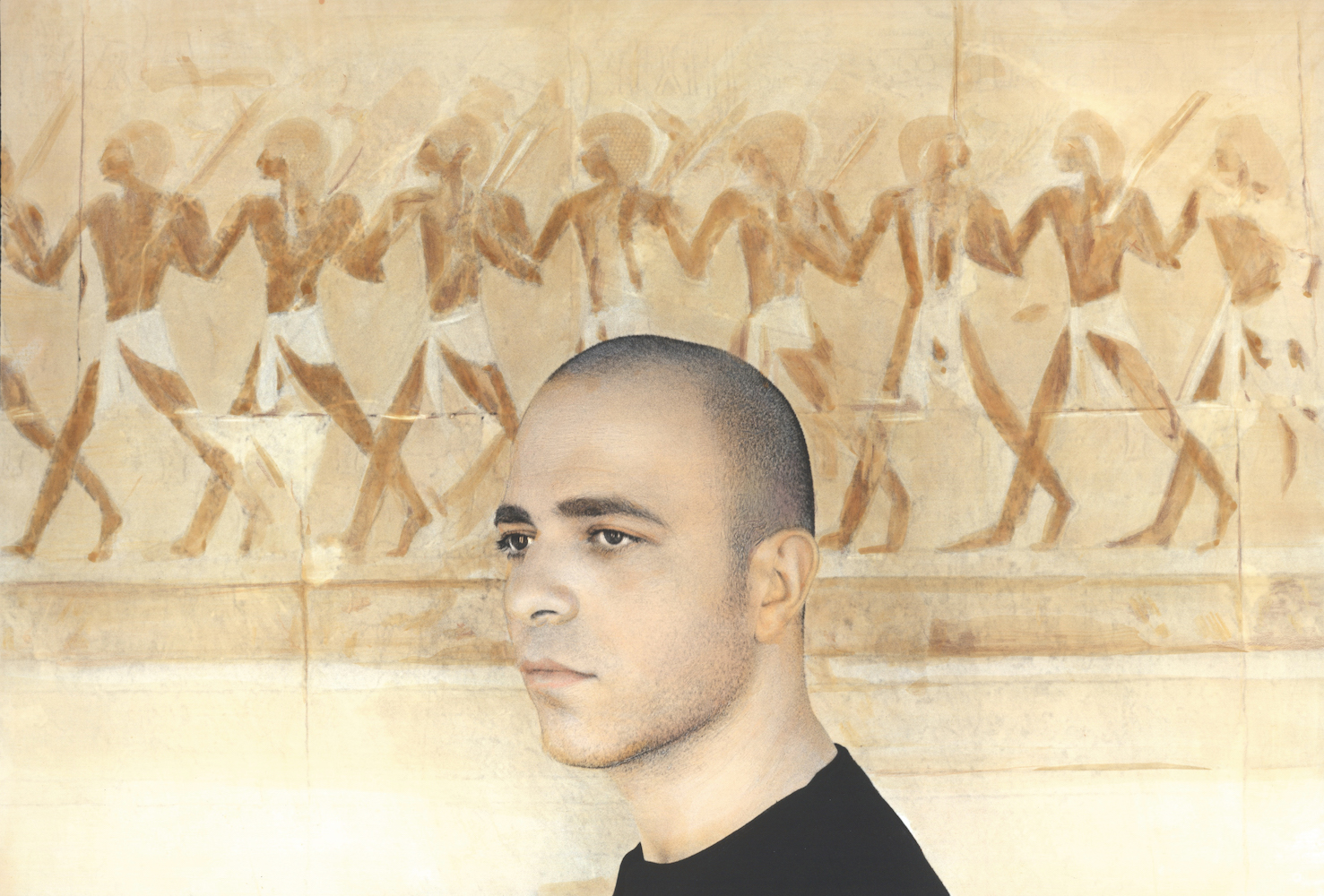
Youssef Nabil, “Self-portrait, Luxor,” 2014, hand colored gelatin silver print, courtesy of The Third Line Gallery, Dubai and Nathalie Obadia Gallery, Paris/ Brussels.
Nabil’s artistic oeuvre—whether portraits, film, or landscapes—evokes a sense of romanticism, loss, and memory. It pays tribute to a time gone by, or one that maybe only ever existed in our dreams. While he’s collaborated with celebrities and actors like Salma Hayek, Catherine Deneuve, and Alicia Keys, his images remain deeply personal.
This year, he has a major survey show at Palazzo Grassi in Venice, “Once Upon a Dream,” on view through January 10, 2021. Nabil spoke to us from Paris about preparing for the exhibition, as well as his newest series of landscapes that explore the fragility of life.
WHITEWALL: Can you tell us about your survey show “Once Upon a Dream”?
YOUSSEF NABIL: It is the biggest survey exhibition of my work to date. It’s more than 120 works—the early work, the films I’ve done, even including a room with everything that inspired me growing up in Egypt, like old Egyptian movie posters that I personally collect. I grew up seeing these posters all over the streets in Cairo in the eighties. They were all hand-painted. At the time, there was a big culture of hand-painting movie posters. Until the early nineties, you could still get studio portraits done in downtown Cairo—done mainly by Armenian photographers in black-and-white or hand-painted.
I thought it was the most beautiful thing, that you could look at a photograph and not know if it was a painting or photo, and I started doing it 1992. I started taking portraits of my friends and family, people around me and myself, using black-and-white films—that’s what I do still today, I don’t work in digital at all—and I hand-painted, using the same old photography technique that was used in all those studios in Egypt. Now, they don’t exist.
I started in 1992. It’s almost three decades of me working.
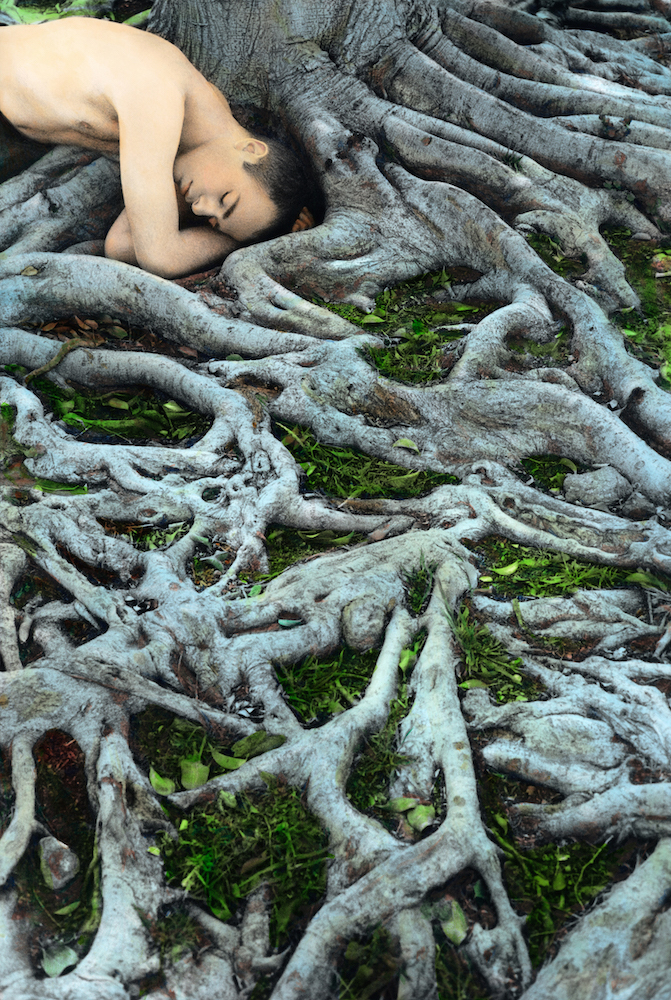
Youssef Nabil, “Self Portrait with Roots, Los Angeles,” 2008, hand colored gelatin silver print, courtesy of the artist.
WW: This room you mentioned of movie posters you collect—it’s like your origin story. Does the show, then, progress chronologically?
YN: It’s more thematic and not in chronological order. I had to build the show around the space, like in the installation of a work that is called The Last Dance. There are four series of them and each has 12 photographs. It’s about my fascination with dancing and belly dancing. Growing up in Egypt and seeing all the changes that happened to the society, to the country, judging women, who use their body to dance. I did this in 2012, and they are visually very abstract. You don’t see the faces of any of the dancers; you just see their dresses flying around in gold. Parts of their bodies appear or disappear under the fabric into forms that resemble a butterfly trying to resist death.
That’s what I wanted—I felt this kind of art form resisting all the changes happening after the revolution in Egypt. The same in the video I saved my belly dancer is this feeling and fascination with an art that is the oldest, purest kind of art from this region
This piece is now going to be filling the main room in Palazzo Grassi—it’s the biggest installation I’ve done to date.
WW: What are some of the earliest works we’ll see? And what’s it like for you to revisit those?
YN: The earliest work was more about the cinema inspiration and scenarios I used to write. I applied for cinema in Egypt for two years in a row to study, and I was refused everywhere. So I started calling my friends from school and family to photograph them in little scenarios that I wrote and directed. Everything was prepared as if in a movie. That’s the beginning of my work.
For years, cinema was my main inspiration, whether the technique or the idea of playing roles in front of the camera that resembled life, but is not exactly life. I wanted to tell stories with the camera.
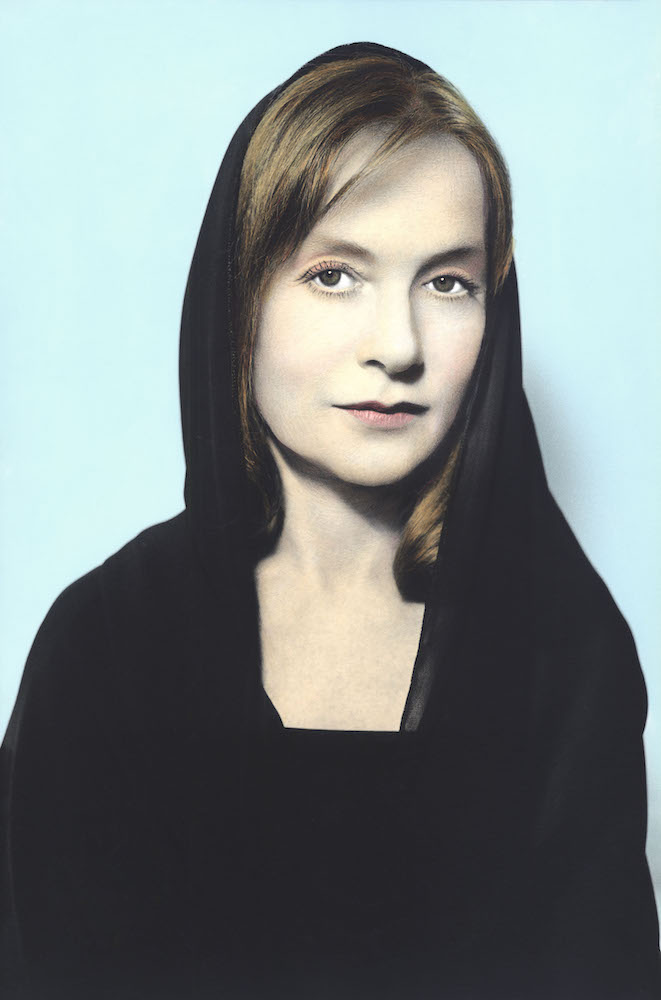
Youssef Nabil, “Isabelle Huppert, Paris,” 2012, hand colored gelatin silver print, courtesy of the artist and Nathalie Obadia Gallery, Paris/Brussels.
WW: Why was that?
YN: The camera was the only machine that kept a moment that you could look at after 50 years, 100 years.
As a kid, watching old films, I was always asking my mother, “Where are these actors?” Most of the time the answer was, “They are all dead.” It did something to me. I understood that the camera is the only machine we could use to save the image of the people we love before they die, or before I die.
I started working from this understanding, and a lot of my work has to do with the idea of existence, death, especially in the self-portraits.
WW: There is a different feeling in your self-portraits. Can you tell us about how you approach them?
YN: The self-portraiture is the most personal work. It speaks more about my own interrogations and questions about life, existence, and after. I started doing more of them when I left Egypt in 2003. I was busy in Egypt with all the work in the nineties—photographing my friends and myself and actors and belly dancers I loved. But I always knew I would leave one day. I was there thinking, “I need to get out.”
Finally, I found myself in Paris, in this new place, and I started asking myself questions about the idea of leaving home. Everywhere I go since I left my home, I felt like a visitor. I’m there for a period of time and then I have to go.
I don’t look at the camera most of the time, because it could be about anyone—it’s not important to see my face. It’s the idea of witnessing life in those self-portraits everywhere I go, looking at the moment, in that city, in specific place. I do them in different cities, and just like the people I invite to take part in my story, my work, I also invite certain cities. I want Naples, or this island in Greece, or I want Alexandria in Egypt. It’s not everywhere I go. It’s when I feel I need to say something in this place.
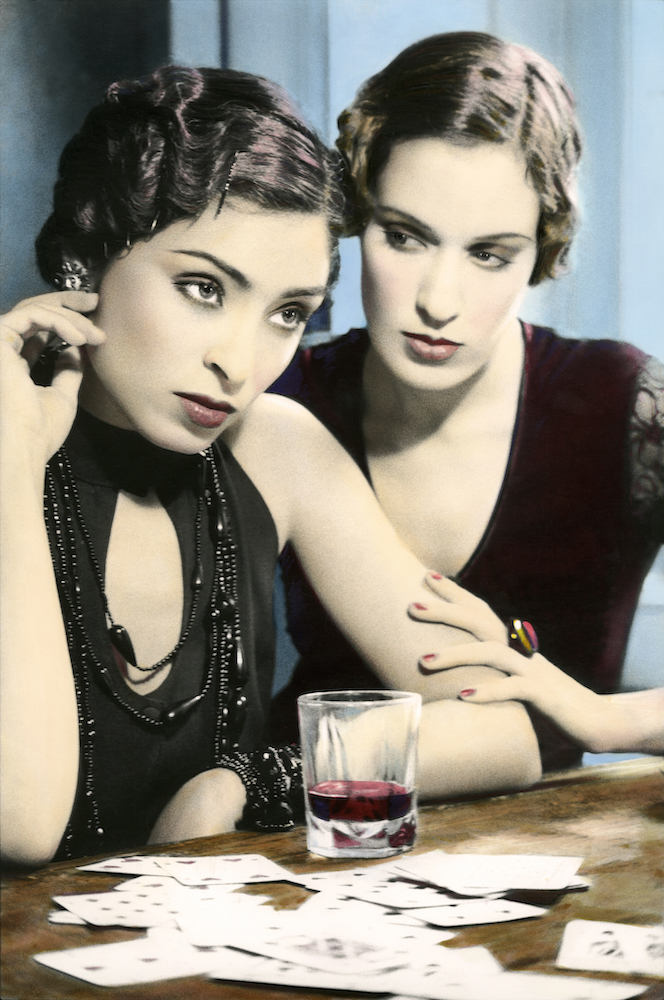
Youssef Nabil, “Sweet Temptation, Cairo,” 1993, hand colored gelatin silver print, courtesy of the artist.
WW: What make you want to take someone’s portrait?
YN: My whole work is an idea and my whole life is a story. As an artist, if I invite someone to take part in this story, I have to have a relationship with them. I need to understand their idea, agree with their idea, include them in my own idea.
WW: Since cinema has been such an inspiration to your work, what was it like to make your own films?
YN: It was actually a strange feeling. It was like a dream coming true, because I always wanted to see my photographs moving. And for the first time I saw my ideas moving. But, technically and artistically, it felt very natural, as I always directed people in front of the camera but I was only taking one picture at a time, and then suddenly, it didn’t have to be one still.
The only difference is that I found suddenly 75 people around me while working, instead of me working by myself. So that was a little bit overwhelming, but it was also a great feeling. I knew that everyone around me was there for one purpose. We all had this one purpose, of making every scene and every shot look perfect.
I see my films as self-portraits. And the actor I work with, Tahar Rahim, is playing me, what I feel. The videos are all about personal experiences that I’ve lived.
WW: What was the experience you were exploring in You Never Left (2010)?
YN: I’m talking about the idea of when you have to leave home, and the relationship between leaving and dying. There is a mini kind of death that happened to me when I left Egypt. I wanted to speak about it in this film.
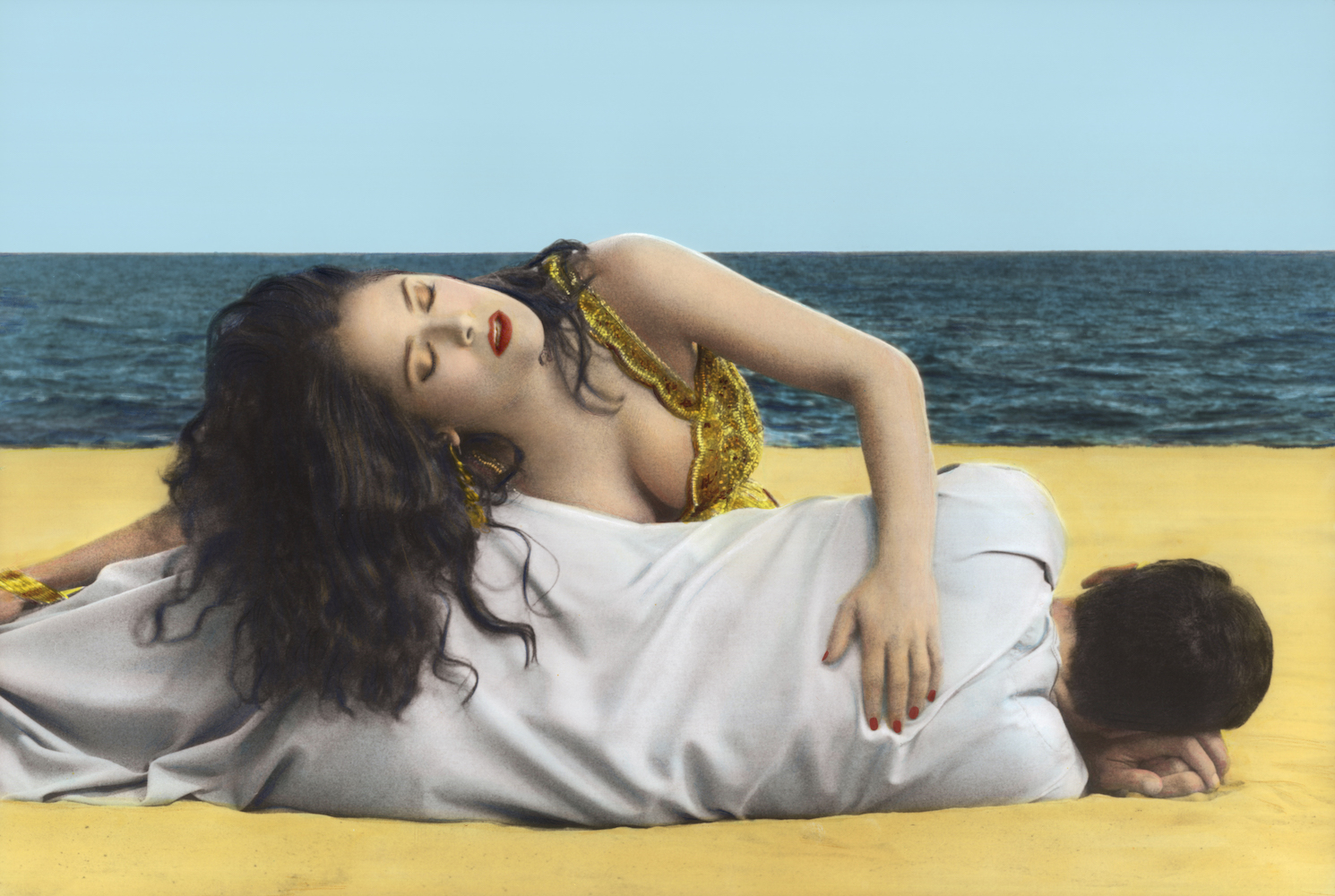
Youssef Nabil, “I Saved my Belly Dancer # XI (detail),” 2015, hand colored gelatin silver print, courtesy of the artist and Nathalie Obadia Gallery, Paris/Brussels.
WW: And I Saved My Belly Dancer (2015)?
YN: It’s about my admiration and fascination with this art form and how I was worried when I saw some clubs shutting after the revolution. I started thinking of the Iranian revolution, what happened to the country when the Islamic regime came to power. They started first banning women going to government places with their hair showing. And then on TV, and then it was in the streets. They always attack women first. Because they can.
When you let women and men express themselves equally, it is an indication of how free society is. That’s the way she chose to express herself—artistically through dancing and using her body. It’s an art form. In my mind, the name of the film came to me first. Who is going to help or save this poor woman? I wanted to save those belly dancers.
But it’s more about memory. The video, of course, for me is about what I wanted to save in my memory even though it is no longer part of reality.
WW: Working on this survey, what’s it like to look back at work from 1992?
YN: I am 47 today, so looking back at the work I did in 1992, when I was 19, just before turning 20, it’s very moving for me to look at them that way for the first time all in one exhibition. It’s a very personal experience for me. Some of the work I did before I cannot do today. I remember myself at that time, how I felt when I was photographing the people and subjects I chose. At the same time, there is so much linked to what I’m doing today.
I’ve changed, and I don’t feel the same, but at the same time, they are all versions of my emotions, myself, and my expression.
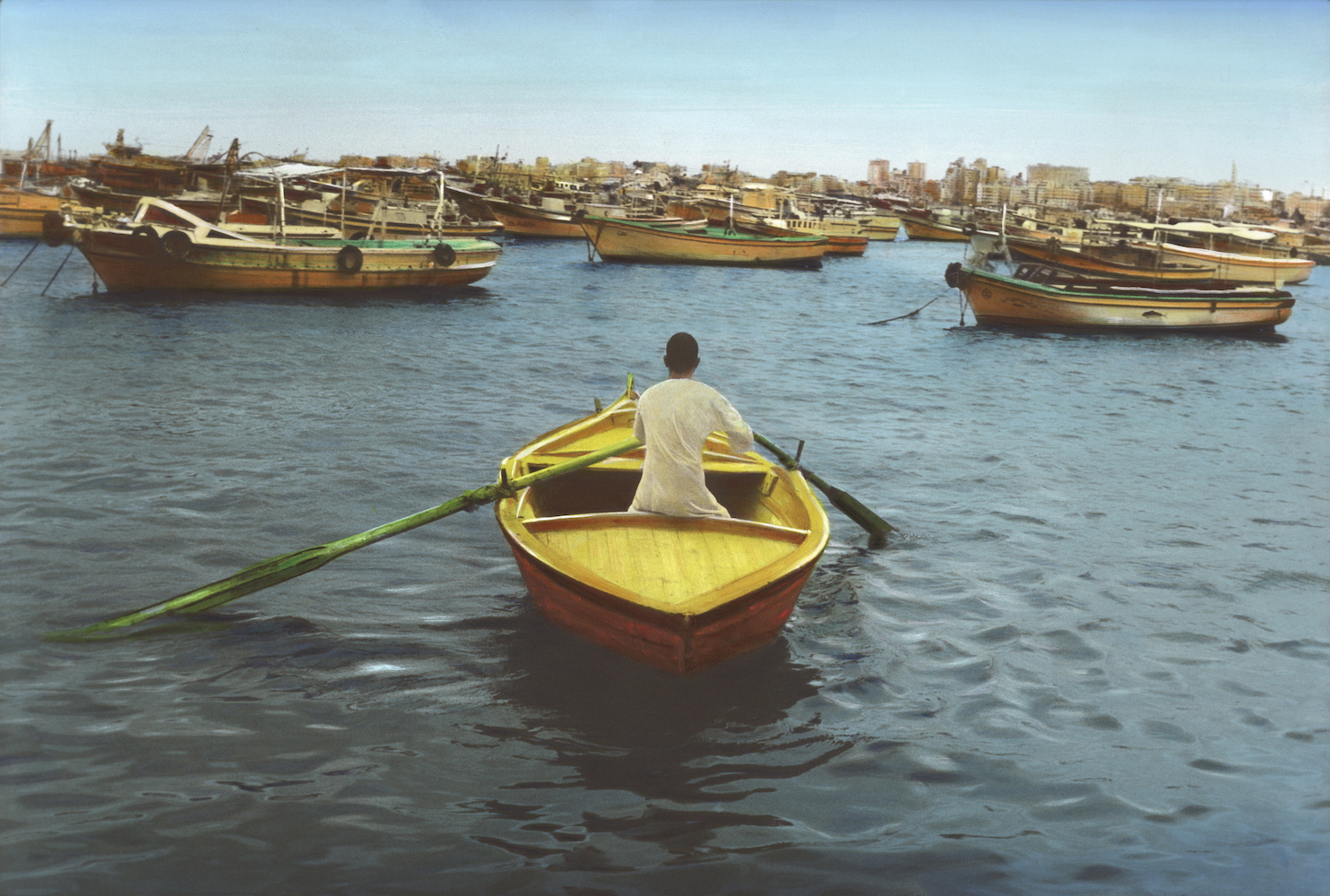
Youssef Nabil, “Say Goodbye, Self Portrait, Alexandria,” 2009, hand colored gelatin silver print courtesy of the artist.
WW: And what is the most recent work that will be part of the show? What are you working on today?
YN: The most recent work is from 2019 and shown for the first time. They are abstract landscapes that represent visually how I connected to each of them. They are related to the subjects of my self-portrait work, in terms of the message behind and what made me create each work in the first place. They are about my observation and interrogation of life and existence, about how fragile we all are going through life, knowing that we are just passing by, then leaving.
WW: Can you tell me about your studio space?
YN: I always work and live in the same space. It’s the same everywhere. All my space is an office and a studio (for painting, not studio to shoot). And then I have one room for myself to sleep. I never really like to separate where I live and where I work because I work from the minute I wake up to the minute I sleep. I’ve always been like that. I never know when I will end the painting or the work. That’s what I always enjoy, to work and live from home, or to work and live from my studio.


